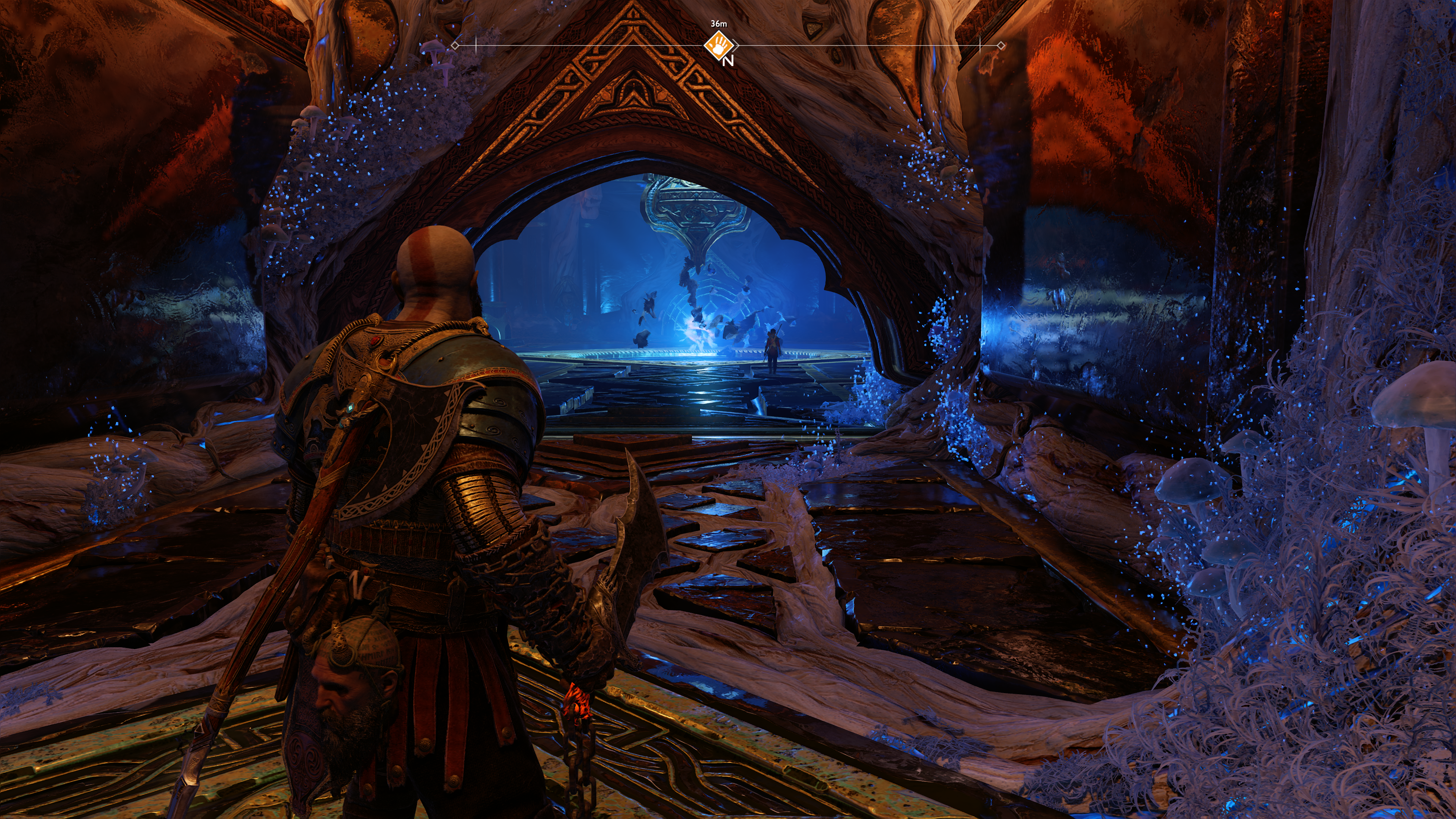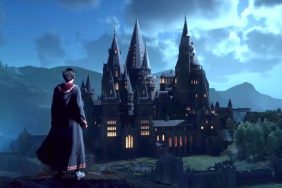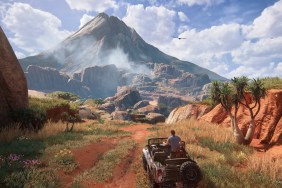As the first mid-gen console refresh, Sony’s PlayStation 4 Pro had little competition at the time of its release. Sure, the PC exists, but some could argue they’re not competing for the same demographic. Since the Xbox One X’s launch, Sony’s upgrade no longer holds the title as the most powerful console. With that said, how has the PS4 Pro upgrade fared over the past two years from a console gamer’s perspective?
The first wave of supported titles
Early adopters had a decent library of heavy hitters. Games like Mantis Burn Racing, Thumper, and NBA 2K17 ran at a native 4K resolution while boasting a 60 frames per second update. Rise of the Tomb Raider made good use of the newly introduced checkerboard rendering in its resolution mode while offering alternative settings for those that preferred an uncapped framerate or a push to higher graphical presets at 1080p. Ratchet & Clank‘s temporal injection also deserves recognition for delivering excellent image quality for a $400 console in 2016. Battlefield 1 used a higher dynamic resolution framebuffer than the other consoles while running with a mix of medium to high settings compared to the other consoles’ low to medium mix.
The PlayStation 4 Pro positioned itself as a reasonably priced console offering a “premium” experience. That strong impression, however, began to waver over the next two years.
Hardware deficiencies
Despite its specs boasting a nearly 2.3 times raw boost to GPU compute power, those numbers mean little in the grand scheme of things. The PS4 Pro added an additional gigabyte of DDR 3 RAM dedicated to operating the OS, slightly freeing up resources for developers to use in game. Despite this, the system at its core, still only contains 8GB of GDDR 5 memory with an incremental bandwidth increase. Once Microsoft showed up with 12GB of GDDR5 RAM and a bandwidth improvement over the Pro of over 100 GB/s , it became clear where Sony cut corners for cost.
While this makes the Pro a more affordable machine for the mass market, its lopsided design also makes higher resolutions difficult without the use of reconstruction techniques like checkerboard rendering. In the end, the Xbox One X was the PS4 Pro’s “downfall.” With some exceptions, it’s Sony’s first party titles that make the best use of the Pro’s hardware. Though this turnout was expected, its inconsistent third-party support wasn’t.
The first sign of trouble
Although the PS4 Pro left a strong first impression, its shortcoming quickly became apparent. After witnessing great image quality with Rise of the Tomb Raider, Bound, Ratchet and Clank, and Deus Ex: Mankind Divided, Square Enix’s AAA RPG left me scratching my head.
Those games looked good on a 55-inch 4K TV. Why, then, did Final Fantasy 15 look like such a blurry mess? People droned on about how amazing the graphics were, yet as an owner of the best looking version at launch, I had no idea what anyone was talking about. Nearly every 1080p game I had seen prior was sharper despite Final Fantasy 15‘s dynamic resolution stretching as high as around the 1800p region. What was going on?
As it turns out, Final Fantasy 15 makes the case for why Temporal Anti-Aliasing is the generation’s worst trend. TAA provides better overall coverage than many other AA methods at the expense of clarity. It doesn’t ruin the image as much as FXAA, but the end result is still blurrier than a raw, aliased image. Square Enix must have doused its entire game in a lake of oil because I haven’t seen such an aggressive TAA implementation since.
This excessive TAA combined with a suboptimal checkerboarding solution resulted in some of the worst image quality of the generation.
Its best efforts
Despite the perceived doom and gloom, first-party developers typically maximize their machine’s hardware. Super Mario Galaxy wouldn’t have looked out of place on the PS3 or Xbox 360 running at 720p. The same can be said of most big budget PS4 exclusives. Horizon Zero Dawn is one of the generation’s most technically impressive open-world games with a granular attention to detail typically reserved for linear games. While the Pro resorts to checkerboard rendering, it is one of the best implementations to date from any developer.
The Shadow of the Colossus remake deserves special mention. With extremely high quality textures, complex geometry, and a decent resolution mode utilizing temporal super sampling, it’s one of the most visually stunning games of 2018. God of War‘s checkerboard rendering looks good enough combined with Santa Monica Studio’s technical prowess. Persona 5 didn’t feature PS4 Pro enhancements, but Dancing in Moonlight and Dancing in Starlight, the spin-off rhythm games, do and they look sharp.
A large string of disappointments
Unfortunately, there are only so many truly impressive Pro titles. Even some exclusives, like Yakuza 6 and Yakuza Kiwami 2, underwhelm. Final Fantasy 15 was only a sign of things to come for third party Pro support. So many games in the past two years have launched with sub-par PS4 Pro support, if they even supported the system to begin with. Many developers have felt content with simply bumping the resolution from 1080p to 1440p and calling it a day. The list of straight 1440p bumps includes, but isn’t limited to, the following:
- Dishonored 2 and Dishonored: Death of the Outsider
- Final Fantasy 12: The Zodiac Age
- Fallout 76
- Firewatch
- Crash Bandicoot: N. Sane Trilogy
- Homefront: The Revolution
- The King of Fighters 14
- Injustice 2
The list goes on, but you get the point. If you delve deeper, some games like Abzu, Lawbreakers, The Evil Within 2, and Fe don’t even reach a 2560 by 1440 pixel count. Resting at some weird halfway point, the PlayStation 4 Pro has no shortage of disappointing titles. Keep in mind that Fe only runs at 1260p on the Pro, but the Xbox One X version runs at native 4K. That’s roughly 2.7 times the pixel count. These aren’t one-off cases either. It’s incredibly common for multi-platform titles to run at twice the resolution on Xbox One X along with visual settings the Pro typically doesn’t get such as higher resolution textures.
Conclusion
The PlayStation 4 Pro is best served as an exclusives machine. First party titles like God of War, Detroit: Become Human, Ratchet and Clank, Shadow of the Colossus, Horizon Zero Dawn, and Spider-Man compare favorably to even the best Xbox One X enhanced games. It’s a shame third-party support is all over the place because of a few boneheaded, though understandable, decisions on Sony’s part. The hardware simply isn’t conducive to supporting extremely high resolutions or higher quality textures. The Pro wasn’t a “mistake” like trolls on YouTube like to repeat ad nauseam. But in hindsight, it could have been so much more.













